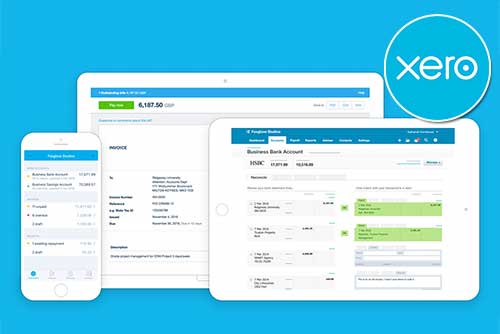What is Operating Profit?
A business’s profit drives its decisions, strategies, and overall performance. But, not all profits are created equal. One such profit measure that holds significant importance is operating profit. But, what exactly is operating profit?
In this article, we will explore the concept of operating profit, its importance, how it’s calculated, and how it compares to other profit measures.
Understanding Operating Profit
Operating profit, often referred to as operating income, is a critical financial metric that reflects the net income generated from a company’s core business operations. This figure is calculated by subtracting all operating expenses, including costs related to production, administration, and sales, from the company’s gross income. It’s important to note that operating profit does not include non-operating income or expenses, such as interest and taxes.
Calculating Operating Profit
Operating profit is calculated using the following formula:
Operating Profit = Gross Profit- Operating Expenses
Where:
- Gross Profit = Revenue – Cost of Goods Sold (COGS)
- Operating expenses include items such as salaries, rent, utilities, depreciation, and other expenses directly related to running the business.
Once calculated, operating profit can be expressed as a pound amount or as a percentage of revenue, known as the operating profit margin. The operating profit margin is calculated by dividing operating profit by revenue and multiplying by 100 to express the result as a percentage.
Why is Operating Profit Important?
Indicator of Operational Efficiency
Operating profit reflects the profitability of a company’s core business operations. By focusing solely on revenue generated from primary activities and deducting related expenses, operating profit provides a clear indication of how efficiently a company is utilising its resources to generate profits. This metric helps management evaluate the effectiveness of operational strategies, identify inefficiencies, and make informed decisions to improve efficiency.
Performance Evaluation
Businesses use operating profit to assess the success of cost-control measures, revenue-generating initiatives, and overall operational performance. Consistent growth in operating profit over time indicates that the company is effectively managing its operations and creating value for shareholders. Conversely, a decline in operating profit may signal operational challenges that need to be addressed promptly.
Investor Confidence
A company that consistently generates strong operating profits demonstrates its ability to generate sustainable earnings from its operations, which enhances investor confidence. Positive trends in operating profit often lead to increased shareholder trust, higher stock prices, and improved access to capital markets.
Strategic Decision-Making
Businesses use this metric to allocate resources effectively, prioritise investment opportunities, and optimise business operations. By understanding the factors influencing operating profit, businesses can develop strategies to enhance profitability, expand market share, and achieve sustainable growth objectives.
Operating Profit vs. Other Profit Measures
Operating Profit vs. Gross Profit
Gross profit, calculated by subtracting the cost of goods sold (COGS) from total revenue, provides an initial snapshot of a company’s profitability. It essentially reflects the efficiency of production and pricing strategies. However, it doesn’t account for the operational expenses involved in running the business.
On the other hand, operating profit subtracts operating expenses, depreciation, and amortisation from the gross profit. This gives a more comprehensive view of a company’s profitability, as it factors in the costs of day-to-day operations.
Operating Profit vs. Net Profit
While operating profit is a measure of the profits generated from the company’s primary business activities, excluding the impact of financing costs and tax expenses, net profit is the residual income left after all expenses, including interest and taxes, have been deducted from the total revenue.
It’s crucial to understand that a company with a high operating profit may still report a low or negative net profit if it has substantial non-operating expenses, such as high-interest payments or large one-time charges.
Operating Profit vs. EBITDA
Operating profit is a measure of a company’s profitability from its core operations, excluding interest and taxes. On the other hand, EBITDA, which stands for Earnings Before Interest, Taxes, Depreciation, and Amortisation, adds back depreciation and amortisation to the operating profit, providing a clearer picture of the company’s cash flow. This is particularly useful for stakeholders who are more interested in the cash flow of the business rather than just the operational profitability.
How to Increase Operating Profit
Here are several strategies that companies can employ to enhance their operating profit:
Cost Reduction
Identify and implement cost-saving measures across various aspects of the business, such as streamlining operations, renegotiating supplier contracts, optimising inventory management, and reducing overhead expenses. By minimising unnecessary costs without compromising product quality, businesses can improve their bottom line and boost operating profit margins.
Revenue Growth
Focus on increasing sales revenue through various strategies, such as expanding product offerings, entering new markets, improving marketing and sales efforts, enhancing customer experience, and implementing pricing strategies that reflect the value proposition. By driving top-line growth, businesses can generate more revenue to cover fixed costs and contribute to higher operating profits.
Productivity Improvements
Focus on maximising the productivity of employees and assets to achieve higher output with existing resources. Provide training and development opportunities to employees, incentivise performance improvements, and implement performance measurement systems to track productivity metrics.
Customer Retention and Satisfaction
Prioritise customer retention and satisfaction initiatives to build long-term relationships and encourage repeat business. Invest in customer service training, gather feedback from customers to identify areas for improvement, personalise marketing efforts, and offer loyalty programs or incentives to reward loyal customers.
The Bottom Line
By focusing on core business activities and excluding non-operational expenses, operating profit provides a clear indication of a company’s ability to generate profits from its primary operations. It serves as a key performance metric for management, aiding in the assessment of operational effectiveness and the identification of areas for improvement.
As businesses strive to increase operating profit, they can leverage various strategies such as cost reduction, productivity improvements, and customer retention initiatives to enhance profitability and create long-term value for stakeholders.





















